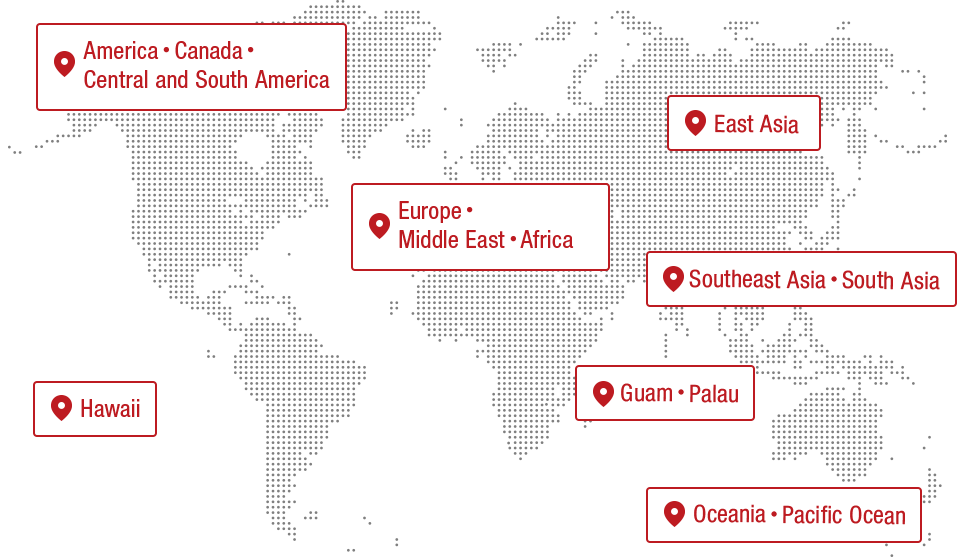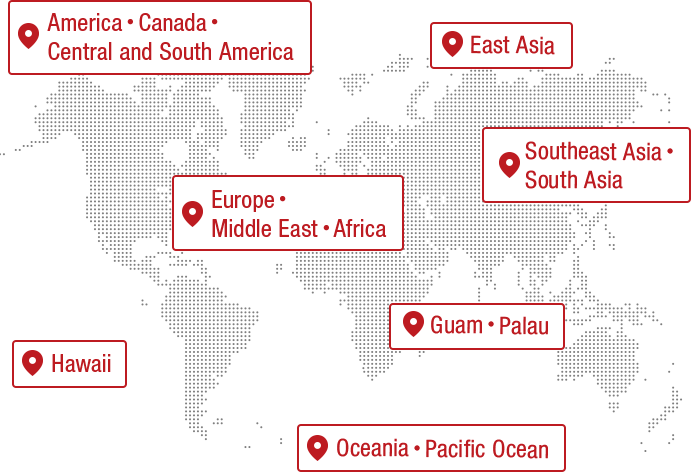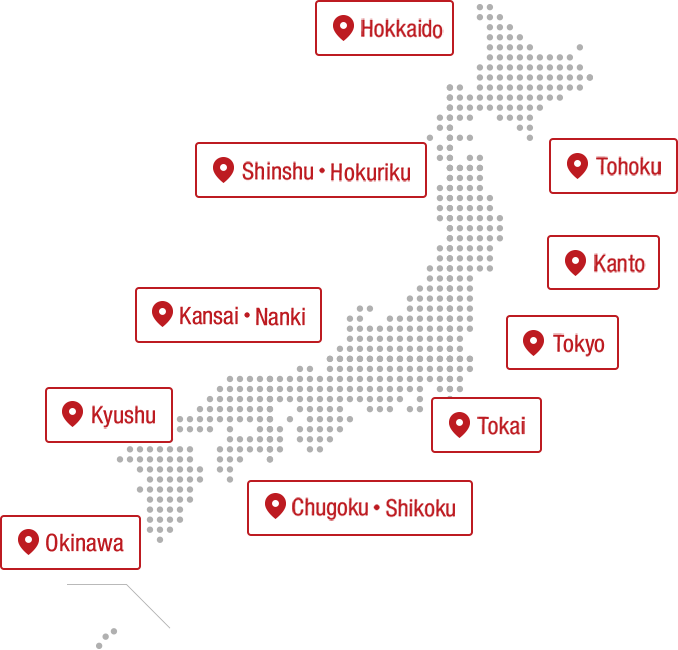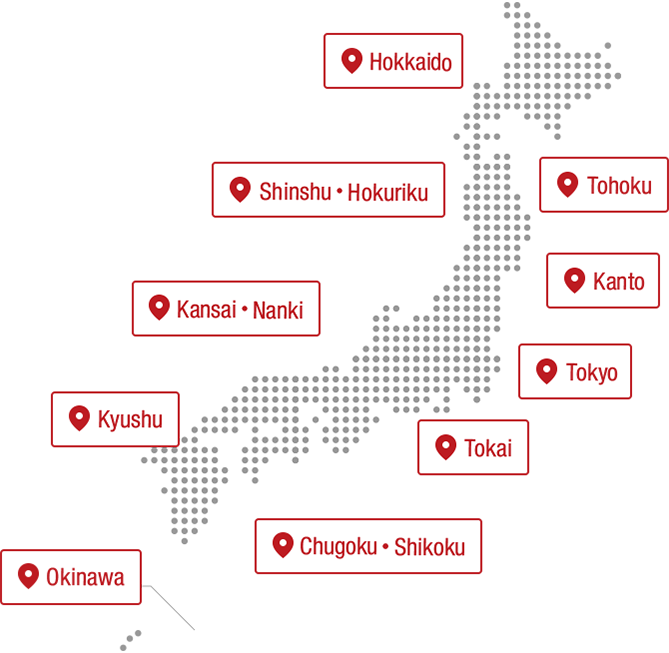
Editor of this article
Masako Shirakura
Toilet researcher. Executive committee member of the Japan Toilet Association. Graduated from Tama University's School of Business and Information in 1996. While writing his graduation thesis "Corporate Management Strategies in Toilet Spaces" during his university days, he realized the importance of toilets and at the same time, the seriousness of the toilet problem. After graduating from university, he did not get a job, but instead began working on toilet-related activities. He has appeared on numerous media outlets, including TBS's "Matsuko's Unknown World." Representative of Untoilet Planner. In May 2023, he will become the first Japanese person to become a director of the World Toilet Association (WTA).
Knowing about Asian toilets in advance is a good idea
When traveling abroad, the most important thing you should know is that things that are common in Japan are not so common overseas.
The same goes for toilets. It is said that there are more than 400 million people in the world who do not have toilets and defecate in the open. (*1)
In this article, toilet expert Masako Shirakura, who has seen many different toilets around the world, explains the characteristics of Asian toilets through her own experiences. Even within the same Asian region as Japan, common practices and facilities differ from country to country, so please use this as a reference before traveling.
*1: UNICEF "UNICEF's main areas of activity: Water and Sanitation"
I can't flush the toilet paper

iStock/Aekprachaya Ayuyuen
One thing you often encounter when traveling to Asia is not being able to flush toilet paper. The reality is that in many cases, toilet paper cannot be flushed due to a variety of factors, including poorly developed sewage systems, weak water pressure, and poor quality toilet paper.
An illustration explaining that toilet paper can be flushed in South Korea (taken in 2017)
Even in Korea, which has many tourists from Japan, most toilets up until a few years ago did not allow toilet paper to be flushed. In recent years, the number of flush toilets has increased in airports and major tourist facilities, but there are still not many of them.
If you can't flush toilet paper, there will usually be a notice posted or a large trash can without a lid, so be sure to check first when you enter the bathroom.
Comment from Shirakura
"When traveling abroad, it may be a good idea to prepare yourself for the possibility that you may not be able to flush toilet paper. If you enter a toilet booth and there is no trash can nearby, you can assume that it is okay to flush the toilet!"
There is no toilet paper
In fact, there are many cases where there is no toilet paper provided. In Islamic and Hindu countries, toilets are often equipped with showers with hoses or buckets filled with water, and there is a culture of washing with the left hand, which is considered "unclean."

A toilet in Laos (photographed in 2024)
In addition, in China, it is customary to bring toilet paper from home when going out, and in Laos, there is a culture of scooping water from a bucket with a ladle to wash your bottom and then flushing the toilet. It seems that such cases are particularly common in local areas and rural areas.

The toilet shower is on the left side of the photo.
iStock/Agung Putu Surya Purna Kristyawan
When there is no toilet paper, toilet showers are used instead. There are hose-type, pistol-type spray, and bucket-type showers, all of which use water to flush the toilet.
Many locals wash their underwear and then leave it on, but if you are uncomfortable putting on wet underwear or are concerned about hygiene, you can wipe it down with the toilet paper or water-soluble tissue you brought with you. There may not be any trash cans, so it's a good idea to carry a trash bag with you.
Comment from Shirakura
"In tropical toilets like Malaysia, toilets rarely have toilet paper, probably because flushing with water dries quickly, so people often use the toilet shower to wash their hands."
There are "squat-style" toilets, which are different from Japanese-style toilets.

A toilet in India (photographed in 2024)
Most Japanese toilets these days are of the Western style known as "sitting toilets." However, in some parts of Asia, the style known as "squatting toilets" is the norm. In Japan, the squatting style is called "Japanese style," but the big difference between "Japanese style" and "squatting toilets" overseas is whether or not they have a "kanegakushi."
A kanegakushi is a semi-spherical protrusion (dome-shaped part) located at the front of a Japanese-style toilet, which serves the purpose of preventing splashes of excrement and water used to flush the toilet from splashing out.
In Japan, when using the toilet, you face your head towards the kanegakushi and your back to the door, but in squat toilets overseas, there is no toilet kanegakushi and it is common to use the toilet facing the door.

An Indian toilet called an "Anglo-Indian toilet" that can be used both while sitting and squatting (photographed in 2024)
In some countries, there are both sitting and squatting types, and also high squatting types.
Comment from Shirakura
"When you travel abroad, you may be surprised by the number of squat toilets. Because there is no kanegakushi, it may be difficult to distinguish between front and back, but you should just think of it as a place where you relieve yourself directly above the toilet hole."
There may not be a private room

A squat toilet in Beijing, China, has partitions but no separate cubicles (photographed in 2024)
The most shocking thing for Japanese people is the lack of private toilets. These types of toilets are also called "Nihao toilets" because you have to face strangers when using the toilet, and are seen in China and other countries. In some cases, they have no doors or partitions. Just like the squat toilets mentioned above, you use them facing forward (where the door would normally be).
Comment from Shirakura
"These types have become much less common recently, but you can still see them in residential and rural areas. These types often don't come with any toilet paper."
Hygiene may not be adequate
If you are used to Japanese toilets, you may be surprised at the hygiene of toilets abroad. The trash cans are overflowing with toilet paper, the toilet bowl is broken, the place smells bad... They are often not cleaned properly. In the case of Western-style toilets, there is no toilet seat, so you may have to use the toilet while squatting.
It may be hard to imagine, since Japanese toilets are some of the best in the world, but when using toilets overseas, not just in Asia, be prepared for the possibility that hygiene may not be top-notch.
Comment from Shirakura
"Even if you go to a paid public toilet in the city, it's best to assume that they are not as clean as those in Japan."
Paid public toilets available

A toilet in India (photographed in 2024)
In Japan, public toilets are generally free to use, but that is not the case overseas. Public toilets in towns and cities often require payment, and there are not many toilets that anyone can use, like those in convenience stores and service areas in Japan.

A toilet in India, with a sign indicating the fees (photographed in 2024)
Prices vary depending on the location, but if there is no staff at the entrance you can pay at the gate, or there may be a coin slot on the door to the toilet booth, so it's a good idea to have some coins ready that you don't need to exchange.
Also, even though there is no charge, toilets at restaurants and other establishments may not be available unless you purchase food or drinks. For example, in Korean cafes, the PIN number is written on the receipt, and you can use the toilet by entering that number into the passlock. It's a good idea to keep in mind that things are different from in Japan.
Comment from Shirakura
"Compared to Japan, there are fewer toilets you can use freely, so if there is one, be sure to use it. Also, be careful about what you eat and drink to avoid diarrhea in the first place."
No toilet flushing sound
One of the things that foreign tourists are surprised by in Japan is the sound-making devices in toilets, known as "Otohime." These sound-making devices were developed to protect the privacy of excretion sounds and to conserve water, but because this culture is unique to Japan, they are generally not installed overseas.
Comment from Shirakura
"Hot water cleansing is basically only available in Japan. Even if it is available, it is limited to economically affluent commercial facilities. Ostomate facilities, which are used by people with artificial anus, are also unique to Japan."
There are no hooks to hang luggage
One thing that can be surprisingly inconvenient when using a toilet overseas is the lack of a place to put your luggage. In Japan, there are hooks for hanging luggage or shelves for placing luggage, but this is also not uncommon overseas.
For such occasions, it is convenient to carry a body bag rather than a handbag so that you can keep both hands free.
Comment from Shirakura
"It might be a good idea to have a large S-hook that you can hang over the door in case you do a lot of shopping."
Useful toilet items
Here are some handy items to have with you when you go to the toilet in Asia.
| Item Name | Applications |
|---|---|
| Tissues (flushable type) | Convenient when there is no toilet paper or when the provided toilet paper cannot be flushed |
| Toilet paper | If you carry a roll of toilet paper with a string attached, you can hang it around your neck and use it as is. |
| wet tissue | Use it to wipe the toilet seat |
| Alcohol spray | Use it to wipe the toilet seat or disinfect your hands after washing them. |
| Plastic bag | There may be cases where there are no trash cans or waste bins, so have one just in case. It is better to have one that is not see-through. |
| Constipation and diarrhea medicine | It's a good idea to carry it with you in case you have diarrhea. |
| Portable bottom washer | It is useful for those who are indispensable in Japan. There are many types, including manual and electric types. |
| Portable toilet seat | A lightweight, foldable portable toilet seat can be used when there is no toilet seat or when the toilet is dirty. |
| Handkerchief | For when you don't have paper towels or a hand dryer |
| Sanitary napkins | Sanitary napkins from overseas may be difficult to obtain, so Japanese sanitary napkins are a safe bet. |
| A bag that leaves your hands free | If there is no luggage rack, we recommend a body bag. It is also convenient to have an S-hook for hanging luggage. |
| Hair ties | When using a squatting toilet, where hygiene is a concern, you should fasten the bottom of your trousers to prevent them from getting dirty. |
| Coin | Carry some coins in case you need to use a public toilet that requires payment |
| Portable deodorant spray | If you are sensitive to odors, you can carry one with you as a matter of etiquette. |
It's a good idea to bring sanitary napkins and a portable diaper with you in case you get your period or an upset stomach while traveling.
In addition to preparing toilet items, check out hotels, restaurants, commercial facilities, and other places that are well-maintained. If you have a list of toilets you can use with confidence, you can feel a little more at ease in case of an emergency.
When traveling to local areas further from the city center, it's a good idea to check in advance where toilets are likely to be located.
In addition, we recommend that you memorize the phrase "Where is the toilet?" in the language of the country. The term "toilet" may not be understood overseas. It is also important to check in advance the common expressions in the country you are visiting, such as "restroom". It may be useful to have a note with "Where is the toilet?" written in the local language in case you cannot communicate well.
Prepare in advance to solve toilet problems
Toilet issues are inevitable when traveling abroad. However, if you prepare in advance, you can avoid toilet stress to some extent. Use this article as a reference and have a fun trip.
Related articles
The contents published are accurate at the time of publication and are subject to change.















